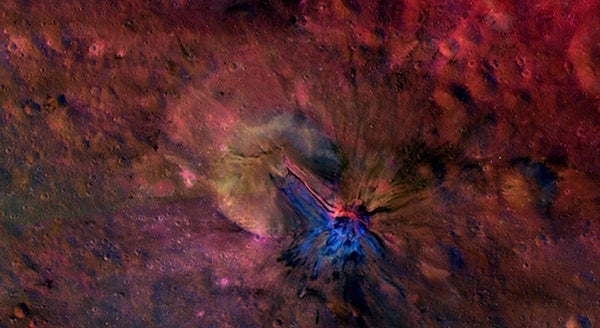But scientists at the Max Planck Institute for Solar System Research in Katlenburg-Lindau, Germany, have re-analyzed the images of this giant asteroid obtained by Dawn’s framing camera. They assigned colors to different wavelengths of light and, in the process, revealed in unprecedented detail not only geological structures that are invisible to the naked eye, but also landscapes of incomparable beauty.
Researchers at Max Planck can now see structures such as melts from impacts, craters buried by quakes and foreign material brought by space rocks, visible because of the camera’s resolution of 200 feet (60 meters) per pixel.
“The key to these images is the seven color filters of the camera system on board the spacecraft,” said Andreas Nathues from Max Planck. Because different minerals reflect light of different wavelengths to different degrees, the filters help reveal compositional differences that remain hidden without them. In addition, scientists calibrated the data so that the finest variations in brightness can be seen.
In the new colorized images, different colors indicate different materials on the surface of Vesta. They reveal impressive formations and a wide range of geological diversity, said Nathues. But above all, the color-coded images are impressive because of their beauty.
“No artist could paint something like that. Only nature can do this,” said Martin Hoffman from Max Planck. Pictures of the crater Aelia, the crater Antonia, and an area near the crater Sextilia show some of Vesta’s most impressive sites.










